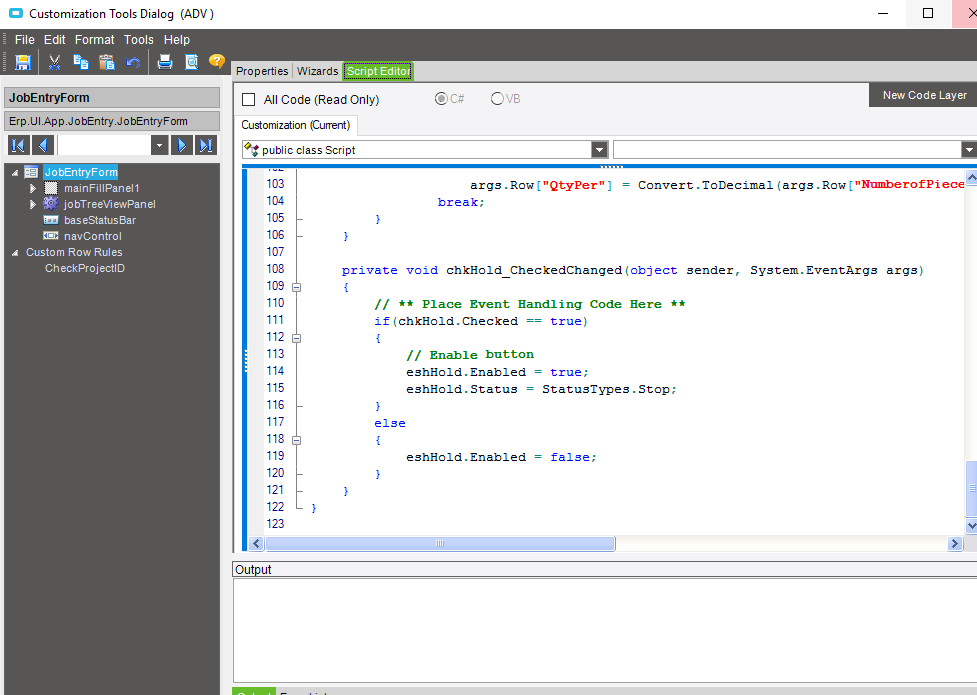Jose, I’m wondering about a variation of the epiShape settings that I’ve come across :
epiShapeWarrantyBar.Status = ( Ice.Lib.Framework.StatusTypes )4;
epiShapeWarrantyBar.BackColor = System.Drawing.Color.Magenta;
epiShapeWarrantyBar.Refresh( );
This code, specifically the “4” in the Status line, produces a graduated “highlight” effect around the horizontal center of the shape, as shown in the middle shape :

Specifying the BackColor works with several colors that I’ve tested from the “Web” list of colors in the BackColor property drop-down list ( Blue, Green, Yellow, Red, Black, Magenta, OrangeRed, LightCoral ). Some don’t work, DarkGoldenRod is one that doesn’t. The compile fails if a BackColor is used that won’t display.
Also, if the Status is less than 4, the color is one of the following regardless of the BackColor setting :
0 = Green, 1 = Yellow, 2 = Red, 3 = Blue - all solid.
Haven’t yet found a way to get a solid color other than these four. Setting the status to 4 or above allows the other colors to be used, but also adds the “highlight”.
The code is from a Customization that was originally done in E9. The highlight effect I found just experimenting with the values. I’ve gone as high as 2048, but the highlight effect didn’t vary with the higher values.
My question is, are these intentional property settings, or perhaps the “old way” of doing it ?
If it’s intentional, it would be useful to call attention to a shape, as in the middle shape above. However, if it’s an unintentional aspect of the code, I wouldn’t want to put it in place only to have that highlight disappear at some time in the future.
Thanks, Ken



